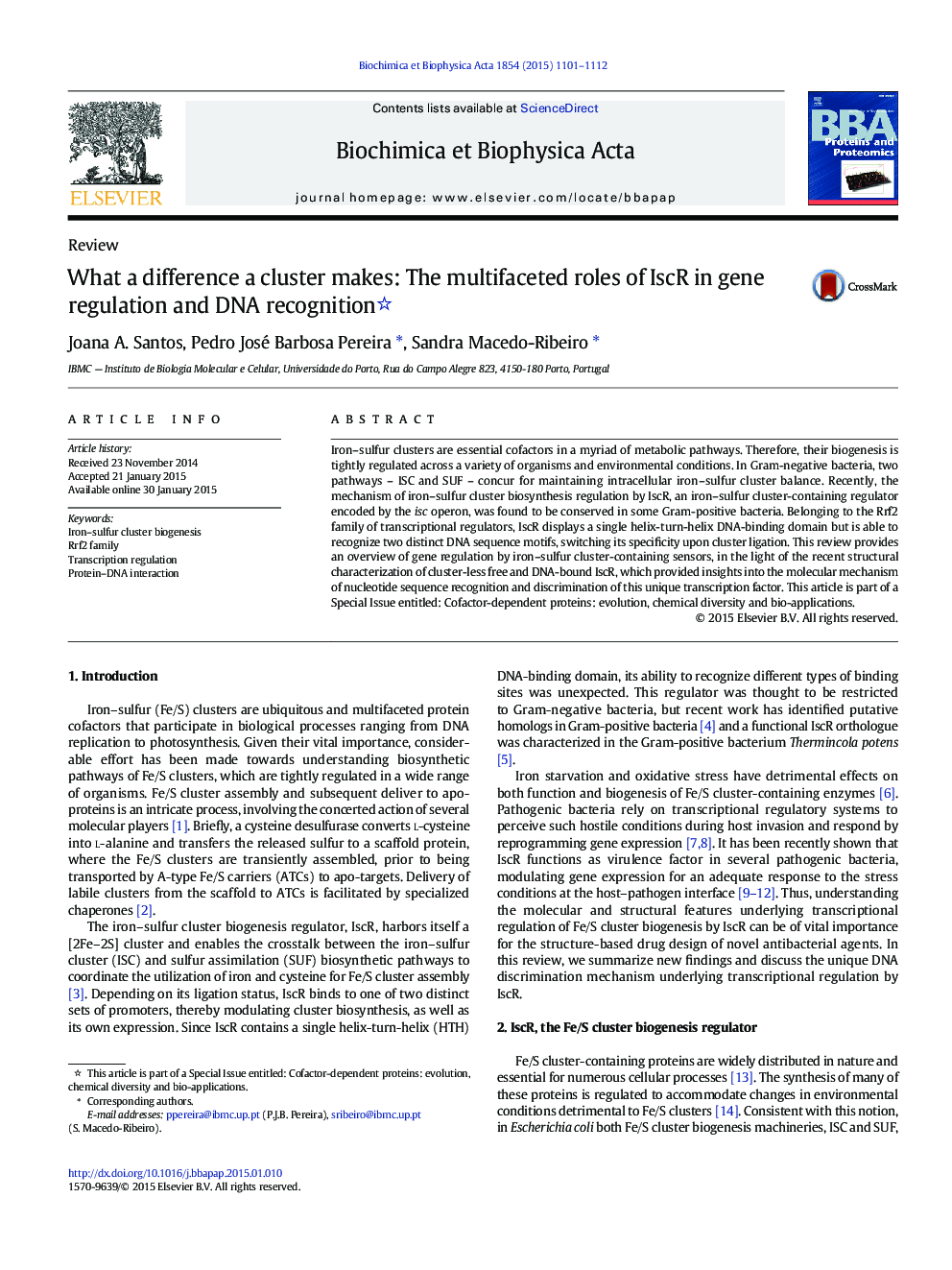| Article ID | Journal | Published Year | Pages | File Type |
|---|---|---|---|---|
| 10537122 | Biochimica et Biophysica Acta (BBA) - Proteins and Proteomics | 2015 | 12 Pages |
Abstract
Iron-sulfur clusters are essential cofactors in a myriad of metabolic pathways. Therefore, their biogenesis is tightly regulated across a variety of organisms and environmental conditions. In Gram-negative bacteria, two pathways - ISC and SUF - concur for maintaining intracellular iron-sulfur cluster balance. Recently, the mechanism of iron-sulfur cluster biosynthesis regulation by IscR, an iron-sulfur cluster-containing regulator encoded by the isc operon, was found to be conserved in some Gram-positive bacteria. Belonging to the Rrf2 family of transcriptional regulators, IscR displays a single helix-turn-helix DNA-binding domain but is able to recognize two distinct DNA sequence motifs, switching its specificity upon cluster ligation. This review provides an overview of gene regulation by iron-sulfur cluster-containing sensors, in the light of the recent structural characterization of cluster-less free and DNA-bound IscR, which provided insights into the molecular mechanism of nucleotide sequence recognition and discrimination of this unique transcription factor. This article is part of a Special Issue entitled: Cofactor-dependent proteins: evolution, chemical diversity and bio-applications.
Related Topics
Physical Sciences and Engineering
Chemistry
Analytical Chemistry
Authors
Joana A. Santos, Pedro José Barbosa Pereira, Sandra Macedo-Ribeiro,
